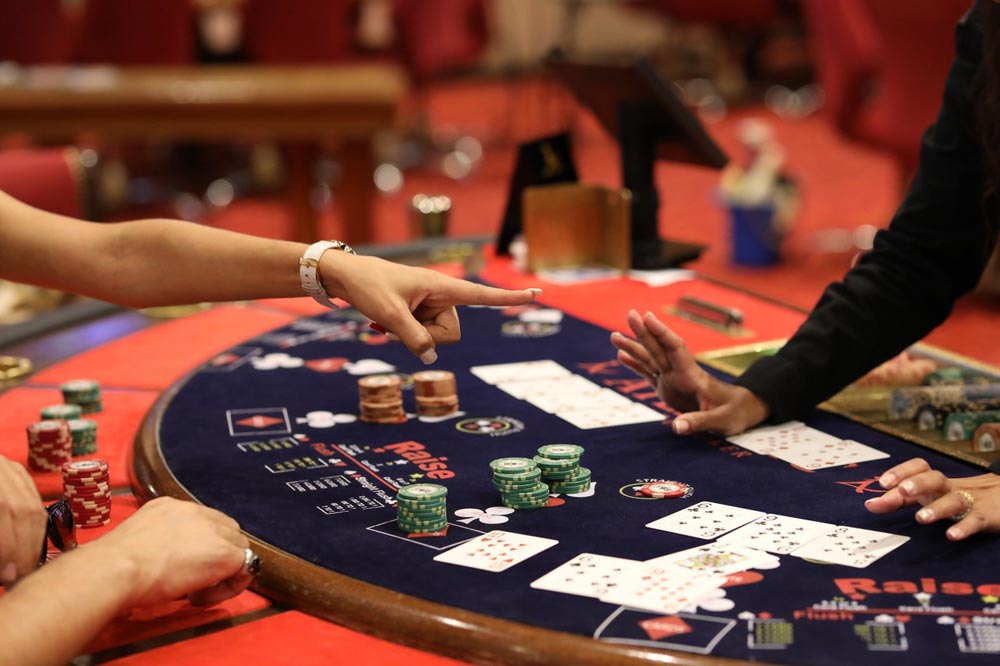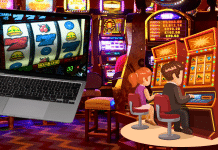Blackjack is a wildly popular casino game and attracts millions of people to the tables each day. Blackjack is a benchmark for any successful Bitcoin gambling site. In other words, it should be one of the first boxes you tick when looking for the best crypto casino. Not only is it extremely fun to play, but the rules are straightforward to learn. Therefore, players can master strategies reasonably quickly, especially with the knowledge of blackjack hand signals.
Understanding the game thoroughly before starting your gambling session is so important. To clarify, this means knowing the appropriate blackjack hand signals when playing. Hand signals are used in a traditional setting at physical casinos, but every player needs to know what they are, as some crypto casinos mimic these actions during live and online games.
Start With Blackjack Basics
The casino card game of blackjack can be described as a banking game. This is because each player at the Blackjack table plays against the banker, which in most cases, is the dealer. Players do not play against each other, irrespective of the variation you choose.
The gameplay is with one or more standard decks of cards, where each deck contains 52 cards without Jokers. We’re talking four different suits with 13 cards in each of these suits. Suits don’t affect the game’s outcome; you only need to accumulate scores.
The most common types of blackjack use multiple decks in crypto and traditional casinos. In cases where your table uses one deck of cards, the dealer usually shuffles that deck manually.
A shoe is a machine used the deal to shuffle multiple decks. This machine automatically shuffles all the decks of cards.
Betting and Outcomes Explained
Blackjack tables have betting limits that are usually displayed clearly, together with the rules of that specific table. For each round that you play, these are the possible outcomes:
- You could lose, and the dealer takes your bet. Two ways to lose are by either busting or having a hand worse than the dealer.
- When you win, the dealer pays your bet out. You win by having a more favourable hand than the dealer.
- The most satisfying way to win is hitting the blackjack. Players typically win with a 3 to 2 payout.
- You can tie the dealer, referred to as a push. In cases like this, you retain your bet but don’t qualify for winnings.

Conditions and Points
While you may have other gamblers playing with you at the table, you are only competing against the dealer. Therefore, the other players’ hands will not affect your results.
In the same light, you cannot team up with other players and play as a collective against the dealer.
The overarching aim in blackjack is to get your cards a total of 21, higher than the dealer. This is provided that their total was below 21.
If your total goes over 21, it is an automatic loss, and you go bust for that round. The value of the hand is determined by the number and suit represented on the card.
An ace can be taken as one or 11, depending on which value is more favourable for your round. Any face card, such as a Jack, Queen, or King, is valued at 10.
The value of the card is dependent on the numeric. Suits don’t play a factor in these calculations. The values on the cards have no ply on the blackjack hand signals.
Gameplay With Blackjack Hand Signals and Decision-Making Strategy
Once all active players have placed their bets, the round starts with the dealer giving each player, including themself, two cards.
The dealer’s cards will be one card face up and the second card face down, while all players’ cards will be face up. The dealer’s card that is face down is referred to as the hole card.
Say the dealer deals a player an Ace and a 10-valued card in the first two cards – this is a blackjack and automatic win. It is the ideal combination when playing the game.
If you and the dealer get blackjack simultaneously, it is a tied round, known as a push. In the case of a push, your original bet is returned to you without any winnings.
If a dealer is dealt a blackjack and all other players at the table have no chance of getting a blackjack themselves, the dealer then wins that round. All other players lose and will not have an opportunity to play additional hands for that round.

More often than not, however, the players will have a chance to decide on the fate of their next hands.
The game’s dynamics allow all players at the table to make their decisions before the dealer flips the hole card. The dealer is obliged to follow the rules of that specific table, with each player acting in sequence when making their decisions, starting with the players to the dealer’s left.
Blackjack Hand Signals During Gameplay
There are some common actions that gamblers take during their gameplay. Some may choose to express these actions by using blackjack hand signals.
How players hold their cards or signs to the dealer depends on whether the game variation uses a single deck of cards with manual shuffling or multiple decks shuffled through a shoe.
The dealer holds the deck for single-deck variations, and each player receives their two-card face down. The players can then pick up those cards and hold them. Blackjack hand signals can be used to communicate throughout the game without the need to talk.
When it comes to multiple decks, all the cards are kept in the shoe, automatically shuffling them. Players receive their cards face-up and are not allowed to touch them, so blackjack hand signals are perfect for smooth play.
Verbal Cues
There are common instances at the blackjack table where players can just tell the dealer what they would like to do.
For example, if a player wants another card, they can just say “Hit” or “Hit Me,” which is understood in blackjack circles. Similarly, players who don’t need more cards can just say “Stand”. This means that they would like to back off from getting more cards.
Seasoned professionals, however, like to use blackjack hand signals to communicate at the table. The signals you can use vary depending on whether you play a single or multiple-deck blackjack variation.
There are multiple blackjack hand signals that improve the efficiency of your gamble. With experience, players will have the ability to learn and implement these signals with ease. There is a lot to look at before explaining the blackjack hand signals. Let’s take a look at a list of the choices you have on each blackjack round:
- Stand: Stick with the existing cards. No more cards from the dealer will be dealt.
- Hit: Ask for another card from the dealer.
- Split: When a pair is provided, the player can split the hand and double the stake.
- Double down: Double your stake, and be dealt another card.
Hit or Stand
You can hold the cards in your hands when playing the single-deck variation. If you need to hit, you can scrap your cards gently on the table in a stroking motion. If you need to stand, you merely place your cards face down underneath your chip stack.

For multiple deck variations, your cards will be in front of you faced up. You cannot touch those cards, so you can point at your cards with your finger or palm if you need to hit them. If you need to stand, you can wave your hand or palm over the cards as a sign of refusal.
Learn the blackjack hand signals for best practice. If your hand goes bust in a face-down blackjack variation, just lay your cards face up next to your bet. As tempting as it sounds like throwing your cards in disgust, that is not good casino etiquette.
Take Insurance
Taking insurance is a side bet player take when a dealer has an Ace as the up card.
The insurance bet size is the same as the original bet. If the dealer happens to have a 10-valued card in the hole, a player will get even money on that bet, although they will lose their original bet.
Say the dealer does not have a 10-valued card in the hole; they will lose that insurance bet and continue with the rest of that specific round as usual.
Surrender
With this option, players may surrender half of their bet to the dealer and keep the other half. This is usually the case when the dealer has a solid hand and a player has a relatively weak one.
In these circumstances, the gambler is not obligated to play out the entire hand and will just surrender. Different casinos and different variations of blackjack all have specific rules when it comes to surrendering.
There is no standard in blackjack hand signals if you want to surrender your hand. But if a gambler wants to surrender, they may place a finger above the table and draw an imaginary horizontal line from their cards to the dealer’s cards.
At the same time, it is crucial to verbally state your intentions of surrendering so that the dealer has clarity on the next steps.
Split

Say you’re dealt two cards with the same points value; you are entitled to split that hand into two separate hands, with each bet being the same as the original bet size.
When a hand is split, the first two cards will be considered two hands for the rest of the round.
It is possible to split two picture cards even if they don’t match, i.e., King and Jack, since they hold the same point value of 10.
Players can split their hands in games where cards are received face-up. The first move would be to state your intentions. Then, place another stack of chips of equal value next to your initial bet at the table. These two stacks of chips must be slightly further apart than you would when requesting to double down.
Implementing hand signals in blackjack make wins easier to accomplish. The blackjack hand signal for a split (which applies to face-down and face-up game variations) is to lift your index and middle fingers in the shape of a ‘V.’ This signifies two different hands.
Double Down
Players do have the option to double their bet size and take only one additional card. This usually happens when a player has a high first card and hopes to score a high second card to maximise his/her total. This can be very effective and profitable if you have the right cards falling into place.
Once stating your intentions, gamblers can double down, but this is only doable in games where the cards are received face up. Then place another stack of chips equal to your original bet next to it at the table.
If you also want to use the blackjack hand signals, hold your first finger up, so the dealer knows you only want one more card.
Stand
When players choose to stand, they no longer wish to take any more cards for that specific round. They are happy with their total and want to wait for the dealer to reveal their cards.
At this point, the round will continue until all participants are satisfied and waiting for the reveal.
After that, the dealer reveals the hole card and proceeds further into the game, if necessary. If the dealer’s two cards total under 16, they must draw more until they exceed 17.

The dealer is obligated to stand if a hand holds a value of 18 or higher. This is the case no matter what hand is received. If the dealer draws 17 in total, that dealer must use his/her discretion depending on whether the hand is hard or soft.
A soft hand includes an Ace with dual value so the dealer can draw additional cards safely.
A hard hand won’t contain an Ace, or the Ace can only count as 1, so the actual value of the hand is already determined.
Rules regarding soft hands differ amongst the different casinos and game variations. They are sometimes required to hit or stand, so those rules can impact the game’s flow.
All active players at the table will win that round if the dealer goes bust on their hand.
If the dealer has 21 or under and is higher than the players’ totals, the dealer will win that round.
Should the dealer’s total be lower, the players with higher totals than the dealer will win.
A tie is considered a push bet, and players will only receive the original bet size with no extra winnings at the end of the hand.
The Bottom Line Of Blackjack Hand Signals
The game has an added elegance with the courtesy of hand signals in blackjack. While incorporating blackjack hand signals can be fun when playing, you might not have the opportunity to use it at a crypto casino. Crypto and online casinos already have buttons on the blackjack dashboard to replace those signals, so a button click will do.
Make sure to visit BC.Game’s blog to pick up some strategy before heading off to the tables with the skill of blackjack hand signals. Good luck!
















